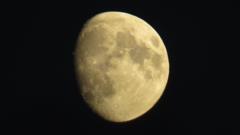
Supermoon Set to Illuminate the Night Sky: The Beaver Moon
On Friday night, sky watchers will have the opportunity to witness the final supermoon of a remarkable series of four consecutive supermoons. The full Beaver Moon is set to rise in the UK at approximately 15:30 GMT on 15 November, promising an impressive celestial display.
While not as bright as last month’s Hunter’s supermoon, this lunar event still offers an exciting astronomical experience. However, viewers should be aware that cloud cover may obstruct the view in some regions.
The Origin of the Beaver Moon
Full Moons throughout the year are traditionally named to reflect natural phenomena. November’s full Moon is called the Beaver Moon, likely due to two historical reasons. First, beavers are particularly active during this time, preparing for the winter months. Alternatively, Native American tribes would set beaver traps before swamps froze, ensuring a winter fur supply.
Understanding Supermoons
A supermoon occurs when the full Moon coincides with its closest approach to Earth (perigee). The Moon’s orbit is elliptical, meaning its distance from Earth varies. During a supermoon, the Moon appears larger and brighter than usual.
This year has already featured three consecutive supermoons: the Blue Moon in August, September’s Harvest Moon, and October’s Hunter’s Moon. The Beaver Moon continues this impressive streak. While supermoons are not rare, with three or four occurring annually, this particular event is special.
Lunar Specifications
The Beaver Moon will be almost 14,000 miles (approximately 23,000 km) closer to Earth than normal. Astronomers predict it will look around 14% larger and 30% brighter than a typical full Moon, though these differences might be challenging to detect with the naked eye.
Weather Forecast and Viewing Conditions
The viewing experience may be challenging due to anticipated cloud cover. Large cloud areas are expected across many UK regions, particularly in Northern Ireland and northern England. Southern England, East Anglia, the Midlands, and Wales might experience clear skies initially before clouds develop. Scotland may start cloudy but could see clearing skies overnight.
Fortunately, even a small break in the clouds could provide an opportunity to observe the Beaver supermoon. Enthusiasts are advised to check local weather forecasts for the best viewing prospects.
A Rare Opportunity
The next supermoon will not occur until October 2025, making this an excellent chance for astronomy enthusiasts and casual observers to witness a spectacular lunar event. Those interested can track potential viewing conditions through the BBC Weather website and app.









